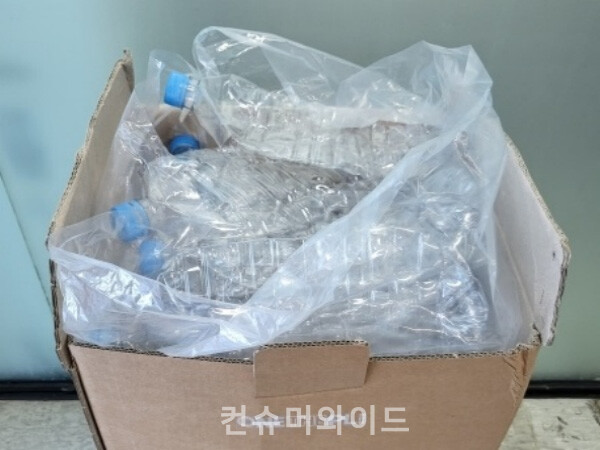
[Consumerwide- Youngchul Woo Reporter/ Yohan Bok Reporter] A scary research project has been announced for the 9th in the US. It says that a bottle of water that is distributed contains approximately 240 thousand microplastics. Is Korean-bottled water safe? There shouldn't be a huge difference. Microplastics are threatening not only the ocean environment but also our food and health. Thus, we have got to reduce the use of plastic by taking practical steps, such as taking water from home instead of consuming bottle water.
An average of 240 thousand microplastic pieces are discovered for every one litre of water, referring to a report by the Beiizhan Yan team from the Lamont-Doherty Earth Observatory of Columbia University regarding three popular bottle water brands announced through PNAS on the 8th (US time). It's been found that a bottle of water contains at least 110 thousand and at most 370 thousand units of microplastic, which is 100 to 10 fold more than in the past. You might just store an average of 240 thousand units of microplastic in your body by the moment you drink a bottle of water.
The research team sees that the plastic filter that is used to filter water right before entering the bottle might have caused microplastics. Besides, microplastics are produced in the process of opening or closing the bottle or when it is exposed to heat. Another reason can be a characteristic of the manufacturing process.
Referring to Gan Sangwook, a professor at Sangmyeong University in the department of Chemical Energy and Engineering, the water might include spread plastic components separated in the process of shaping the plastic bottle (injection moulding) as soon as water is filled in the PET bottle. Plastic is shaped under heat for the flexibility of the substance, and afterwards it goes through shaping, which shapes the bottle by shooting high-pressure gas.
After all, the microplastics stored in the human body matter. Microplastic is sized between 1 μm (micrometer) and 5 mm, and sun light or rubbing discomposes regular plastic into microplastic. Scientists predict that finer microplastics contain more toxicity. Because microplastics that contain numerous amounts of additional substances, including antioxidants, can cause problems by entering the cell membrane, Toxic chemicals attached to microplastics can cause severe influence on the neurosystem or immune system of the human body.
Nevertheless, we are still exposed to microplastics, whether we drink from a tumbler after filtering at home or consume bottle water in the store. Due to the nature of microplastics, tiny pieces of them enter oceans and rivers without being filtered. It resulted in humans eating the fish that were fed by microplastics, as the fish perceived them as feed. Not only fish, but soil and tap water are not excluded from this virtuous circle.
Therefore, the best way is to reduce the use of plastic along with proper recycling after use, which might include the act of ploggng. Action is not an option, but mandatory. Environmental protection begins with small practices, and it can also lessen the amount of microplastic that threatens our bodies.

